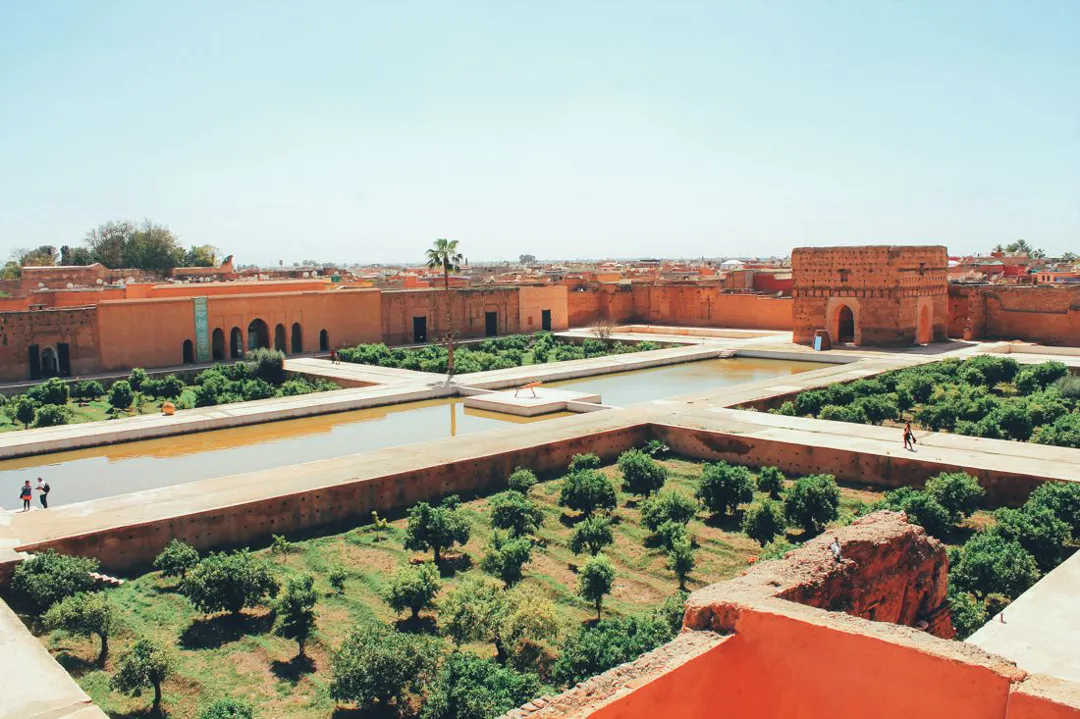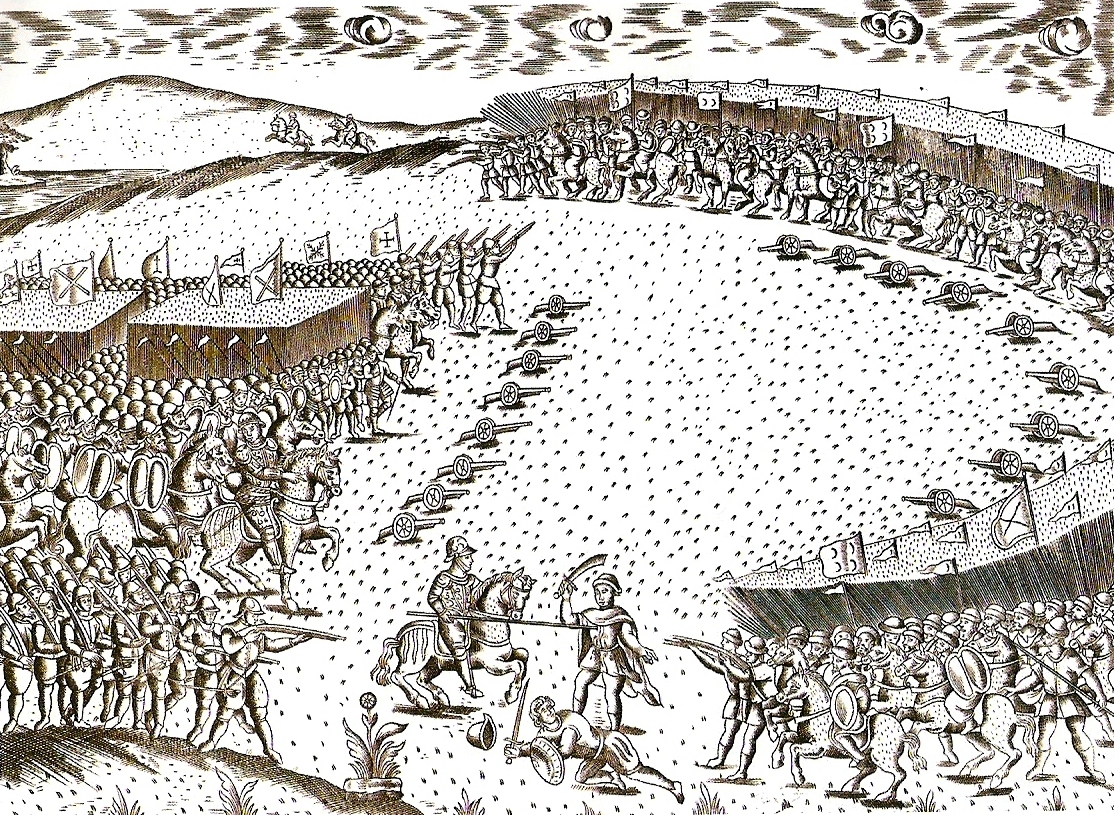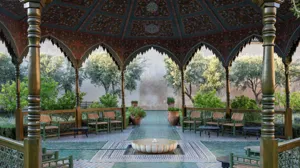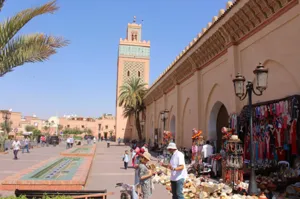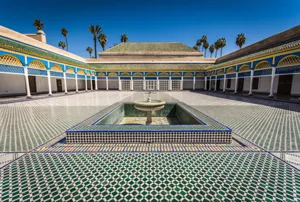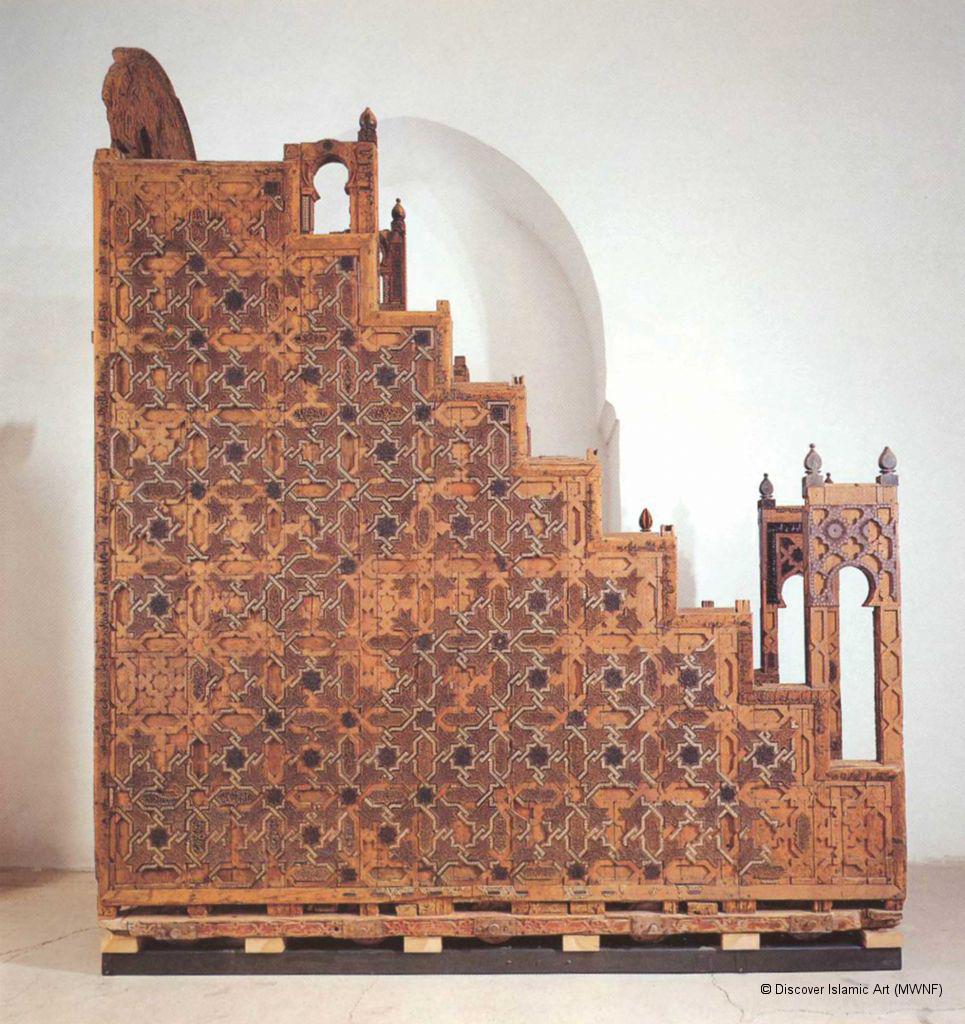Content
After The Reconquista
The Battle of The Three Kings: The Rise Of A New Empire
The Construction of the Majestic Palace
The Destruction Of The Palace: Slowly And Steadily
The Architectural Style Of The Badii Palace
Entrance Time and Fee
Things To Know Before You Visit
Conclusion
After The Reconquista
Since the 8th century, the Muslim Moors conquered the southern Portuguese and Spanish territories. And Renamed them to Al-Andalous.
The Reconquista (Reconquest) or Iberian Crusades were military campaigns conducted between the 11th and 13th centuries.
The objective was to liberate Al-Andalous from the Muslims.
These campaigns had the backing of popes and tempted Christian fighters from across Europe.
By the end of the 13th century, only Granada remained in Muslim hands.
The marriage of Ferdinand II of Aragon and Isabella I of Castile in 1469 united the Spanish crown.
And then, the Catholic Monarchs completed the conquest of Granada in 1492.
The Battle of The Three Kings: The Rise Of A New Empire
In 1557, Sebastian got the throne of the Portuguese Empire.
Sebastian had only three years, but reports say that he was a bright and lively boy.
![Sebastian]()
The young Sebastian
He grew up as a brave man due to his exceptional physical strength. He was tall, slim, and blond.
His empire's influence extended over Africa, Asia, and the American coasts.
And he wanted to gain more land over his southern neighbor, the Moors.
He called his uncle, King of Spain Philip II, and invited him to take part in a new crusade against the Saadiye state.
Sebastian, the King of Portugal by himself, launched a new crusade against Morocco. He aimed to take control of all the beaches of Morocco.
On 4 August 1578, the Portuguese army fought against the Moroccan troops. This was in northern Morocco, near the town of Ksar-el-Kebir.
![The Battle of The Three Kings]()
The battle of Kasr-El-Kabir
Morocco won. And in this battle, Portugal lost its king, its army, and many of its officials. Only one person of the royal family was left.
And then, the Saadiye Empire had been born.
The Construction of the Majestic Palace
After his win, the Moroccan King Ahmed received the title of Al-Mansour Ezahabi. Which means in Arabic The-Victorious The-Golden.
Al-Mansour decided to build Al-Badi Palace to celebrate his victory.
He recruited the best craftsmen masters from Morocco and abroad.
French builders, with excellent experience, contributed to the construction of the Palace.
From Italy, he brought fifty tall columns of marble, some historians said.
Ahmed Al-Mansour was both the engineer and the owner of the project.
He was also watching the progress of construction works and the implementation of the plans.
The design was a mix of what is local and Andalusian.
The gigantic project needs enormous resources. The Sudan gold, the incomes of the sugar trade, and local taxes funded the construction of the palace.
Ahmed Al-Mansour brought the building materials from all over the Kingdom. He also imported some materiels from West Sudan, Europe and, India.
El Badi Palace painted by Adriaen Matham 1640
The construction work of Al-Badi Palace ended in 1602. The final result satisfied Al-Mansour. He ordered to organize huge ceremonies to celebrate the opening of the palace.
And Al-Mansour died one year later.
The Destruction Of The Palace: Slowly And Steadily
After the death of Ahmed Al-Mansour, Al-Badi’s Palace was subjected to acts of sabotage.
The bitter struggle to control Marrakech triggered acts of looting, demolition, and fire.
Then a series of epidemics and famines hit Marrakech and the rest of Morocco.
These events had severe impacts on the population and urbanization.
It was like a curse that fell from the sky. People neglected palaces and luxury lifestyle. The pressure of life absorbed them.
Ahmed Al-Mansour's successors were not at the level of responsibility entrusted to them. Nor to the legacy left by their predecessor.
The Saadiye state became weaker. The governors hid their weakness in the pomp, flashiness, and artificial manifestations.
Al-Badi Palace turned into a place of conflict, rivalry, and conspiracy to reach power.
Everyone lurking for power and influence had the same intended destination, Al-Badi Palace.
So, the palace became vulnerable to looting and vandalism.
The Jealousy Of A King
The establishment of the Alawi State brought more troubles and tribulations. Though Al-Badi Palace continued to exist.
The foreign writings reported a lot of prejudice on the relationship of the Alawites to the palace.
It reported that Moulay Ismail was feeling jealous of the greatness of the buildings. And that he did not rest until he demolished it to get rid of the souvenir of his predecessor.
This is not absolutely true. Moulay Ismail was receiving diplomatic missions at Al-Badi Palace when he was in Marrakech.
And he demolished the palace only when he saw that the building was a refuge for every rebel who rejected the new regime. And the demolition process lasted over ten years.
The palace turned into an abandoned ruin that grazed animals, and a shelter for dogs and owls. It changed into a large pile of dirt.
Amazingly, every place in Morocco received something of the ruins of Al-Badi Palace.
Related posts
The Architectural Style Of The Badii Palace
After the entrance, you can see a spacious central square that centered the palace. The palace's architecture is sharpened around this square. And you can overlook it from all the palace's sides.
El Badi Palace Before Its Demolition
You can also see in this square a large tank of 90 meters long and 20 meters wide.
![Al-Badi Gallery]()
Al-Badi Gallery
Four other side tanks that are not deep. They are rectangular in the shape of swimming pools. Stairs enable you to descend to the bottom paved with a shiny color that is still visible.
There are also four underground gardens approximately 3 meters tall. Lemon, olive, and roses trees planted these gardens.
High-walled rooms surrounded these gardens. Several rooms are equipped with water fountains and mosaic tanks. The most elegant of them were designated for official receptions.
![Al Badi Mozaic]()
El Badi Palace Mozaic
Historical sources mention that there was the gold hall, the crystal hall, and the bamboo hall.
Koutoubia Minbar: the Almoravid minbar of Córdoba
The minbar of the Koutoubia mosque is one of the most accomplished works ever created by Islamic craftsmen.
It is made About 1137 in Cordoba, a center of Andalusian arts and letters.
![Koutoubia-minbar]()
The old Minbar of Koutoubia Mosque
The historians called it a monumental minbar of perfect accomplishment.
Only the one in the Great Mosque of Cordoba (destroyed in the sixteenth century) equaled this minbar.
Its decorative design employs carved wood panels and mosaic bone to cover every visible surface.
Entrance Time and Fee
The entrance time is between 9 am to 5 pm.
The entrance fee is 70 MAD (about 7$).
Things To Know Before You Visit
- There are tunnels with an art gallery.
- The working staff may sound surly and unhelpful.
- You may not find essential information regarding the castle, its history, and its architecture. You may need to hire a guide for that. Though there is an impressive video about the palace.
- Don’t look lost, don’t ask advice and ignore anyone suggesting it’s closed or follow me.
- The view of storks nesting on walls is extraordinary.
- The palace closes its doors at 5 pm. And you may need 2 h to explore these immense vestiges. I recommend you to go before 3 pm to traverse the palace at your ease.
- There is a pleasant view of the city from the tall walls.
- Bring your camera, the sandstone coloring makes impressive photographs.
- This place needs to be worked on to be revived back again.
Conclusion
This palace was built to celebrate the enormous victory of Morocco over the Portuguese empire.
Yet, after the death of its builder, Al-Badi Palace became a place of rebellion and conflict to gain power and influence.
It has been completely destroyed by one of the rulers of the Alawite dynasty.
A must-see!
